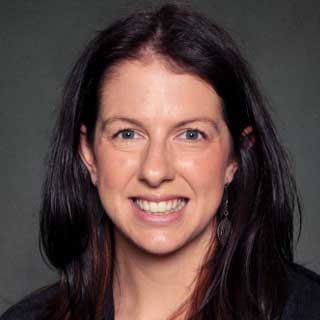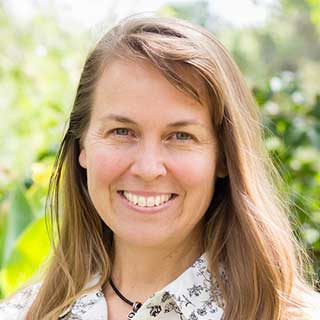Sequence 1: Stem cell understanding ⟩ Module 3:
The role of stem cells in differentiation and development and disruption of the regulation of the cell cycle in the development of disease
The third module within Sequence 1 focuses on developing an understanding of the role stem cells play in differentiation and development and the potential for disruption of this process leading to the development of disease.
Summary
VCE Biology (2016 -2020)
Unit 2, Area of Study 1, Outcome 1, VCE Biology Study Design
Key Knowledge
Cell growth and differentiation
- the consequences of stem cell differentiation in human prenatal development including the development of germ layers, types of tissues formed from germ layers and the distinction between embryo and foetus.
- the disruption of the regulation of the cell cycle through genetic predisposition or the action of mutagens that gives rise to uncontrolled cell division including cancer and abnormal embryonic development.
Duration

Student learning outcomes
On completion of this module, students will:
- understand the concept of cellular differentiation and the role of germ layers in tissue and embryonic development.
- be able to explain the role of stem cells in differentiation and development.
Teacher background information
The core resources for this sequence are from the: National Stem Cell Foundation of Australia, Teacher’s Kit
Download Stem Cell Teacher’s KitNote: Since the Teacher’s Kit was written a number of the links to which it refers have become inactive. It nevertheless remains an excellent resource.
The relevant background reading and activities from this Teacher’s Kit are referenced in the white boxes below. Further background material and alternative activities are highlighted in yellow.
Background material
Teacher's Kit (p.24)
Chapter 2 - The different types of stem cells.
Background information on the different types of stem cells and their functions.
Website
National Institutes of Health: Stem Cell Information
A detailed resource from the National Institutes of Health, USA that includes an introduction, basic concepts and definitions of stem cells. To assist glossary terms are available by selecting the highlighted words throughout the text. Resource for teachers and students.
Document
National Institutes of Health: The Differentiation Potential of Stem Cells
Information on stem cells and the differentiation potential of stem cells.
Website
The Biology of Prenatal Development
This website explores the development of the embryo.
Website (Interactive)
University of Utah: Go Go Stem Cells
Go Go Stem Cells is for students to explore. It includes an introduction to stem cells and brain, blood, hair follicle, bone cell and intestinal cells.
Accompanying this interactive website are teacher resources including:
- Student worksheet with questions (PDF) to be answered as students work through the different sections in Go Go Stem Cells.
- Student worksheet key (PDF): answers
Video
What is a neural stem cell? Narrated by Dr Sam Weiss
In this Stem Cell Network video the focus is on introducing neural stem cells using animated graphics. Limited detail but suitable for sharing with students who can acquire additional information from other sources.
Video
What is a hematopoietic stem cell? Narrated by Dr Connie Eaves
This Stem Cell Network video uses animated graphics to introduce hematopoietic stem cells. Limited detail is provided, but the video is suitable for sharing with students who can acquire additional information from other sources.
Video
What is a cancer stem cell? Narrated by Dr John Dick
This Stem Cell Network video uses animated graphics to introduce cancer stem cells. Limited detail is provided, but the video is suitable for sharing with students who can acquire additional information from other sources.
Video
Khan Academy: Germ Layers
This Khan Academy video (2:11) summarises germ layer derivatives – endoderm, mesoderm and ectoderm.
Website (Videos)
EuroStemCell website: Videos and films
Access to a range of informative and scientific videos and films have been made available by the EuroStemCell organisation.
Highlighted are the following videos:
- Cell fate: Journeys to Specialisation (23:02 min)
- Stem Cells - the future: An introduction to iPS cells (16:43 min)
Website
EuroStemCell: Stem cell fact sheets
The EuroStemCell site is a trusted website that provides teachers with detailed information on stem cells including properties, basics, medical potential and uses.
Particular factsheets of interest:
Activity (PDF)
Embryo Clay Model
This activity explores early embryonic development, differentiation of cells and germ layers though clay modeling. This activity can be modified as required.
Activities
Teacher's Kit (pp.51-55)
Activity 2.5 - So what’s so special about stem cells?
This activity focuses on the relationship between stem cells and the development of specialised germ layer tissues in the developing embryo. Students are required to read a passage outlining the process and complete associated questions with a focus on visual representation of responses.
Teacher's Kit (pp.58-61)
Activity 3.1 - Forming an embryo - from egg to blastocyst
This activity focuses on the development of the human embryo from conception, in this case through the process of IVF. Students are required to match the visual stages with a written explanation (also applies to Module 6).
Teacher's Kit (pp.74-82)
Activity 3.5 - How are stem cells specialised into different cell types?
This activity focuses on the process involved in the specialisation of stem cells. Students are required to read an information handout and complete associated questions.
Other potential activities
Activity
Human prenatal development
Annotate a diagram of a gastrula (embryonic developmental stage after the blastula) and a human body showing the links between the three germ layers of the gastrula and all of the different kinds of specialised cells that make up the body.
Resource
Stem Cell Adventure Comic Book (for student reference)
This alternative resource is provided to teachers as its format may appeal to different students and contains valuable information on the history, science and ethical issues associated with stem cells.
Next module: Current and potential use and …
 Contemporary VCE Biology
Contemporary VCE Biology


